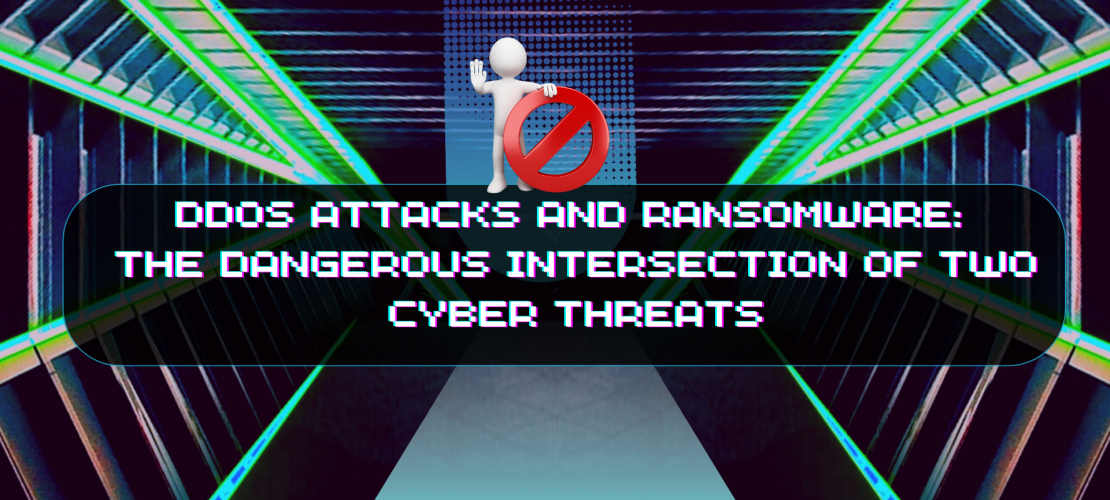In recent years, the frequency and complexity of cyber threats have increased significantly, and two of the most prominent threats are DDoS attacks and ransomware. DDoS attacks involve overwhelming a network or server with traffic, while ransomware involves encrypting files and demanding payment for their release. These two threats are dangerous on their own, but when combined, they can wreak havoc on a business or organization. In this blog, we will discuss the dangerous intersection of DDoS attacks and ransomware and how to protect against them.
The Intersection of DDoS Attacks and Ransomware
DDoS attacks and ransomware are often seen as distinct threats, but they can work in tandem to achieve a common goal. A DDoS attack can be used as a distraction while ransomware is deployed, allowing attackers to gain access to sensitive data or cripple a network without detection. Alternatively, a ransomware attack can be used as a cover-up for a DDoS attack, allowing attackers to mask their malicious activity and hide their true intentions.
The use of DDoS attacks as a diversionary tactic is becoming increasingly common. In 2016, the Dyn DNS attack, which disrupted major websites such as Twitter, Amazon, and Netflix, was caused by a botnet of compromised IoT devices. The attack was followed by a ransomware attack that affected a hospital in the United States. The attackers used the DDoS attack to distract security personnel while the ransomware was deployed on the hospital’s network.
Ransomware attacks are also becoming more sophisticated and dangerous. In 2017, the WannaCry ransomware attack affected more than 300,000 computers in 150 countries, causing billions of dollars in damages. The attack was followed by a DDoS attack on the UK’s National Health Service (NHS), which further disrupted healthcare services in the country.
Protecting Against DDoS Attacks and Ransomware
To protect against the dangerous intersection of DDoS attacks and ransomware, organizations need to take a comprehensive approach to cybersecurity. Here are some measures that can help protect against these threats:
- Implement DDoS Mitigation Solutions: DDoS mitigation solutions can detect and filter out malicious traffic, preventing it from reaching the network. These solutions can also identify the source of the attack, allowing security personnel to take appropriate action. It is essential to choose a DDoS mitigation solution that can handle the scale and complexity of modern attacks.
- Conduct Regular Vulnerability Assessments: Conducting regular vulnerability assessments can identify weaknesses in the network or applications that attackers can exploit. Organizations can then take steps to address these vulnerabilities before they are exploited.
- Backup Critical Data: Regular backups of critical data can help mitigate the impact of a ransomware attack. If a network or system is encrypted by ransomware, organizations can restore their data from backups and avoid paying the ransom.
- Educate Employees: Employees are often the first line of defense against cyber threats. Educating employees on cybersecurity best practices and how to identify and report suspicious activity can help prevent attacks from being successful.
- Use Multi-Factor Authentication: Multi-factor authentication adds an extra layer of security to the login process, making it more difficult for attackers to gain access to the network or sensitive data. This can help prevent ransomware attacks, which often rely on gaining access to a network through compromised credentials.
DDoS attacks and ransomware are two of the most significant threats to modern businesses, and their intersection creates an even more dangerous landscape. Organizations must take a proactive approach to cybersecurity, implementing a multi-layered defense strategy that includes network security, access controls, threat intelligence, and employee training. It is essential to have a disaster recovery plan in place that addresses both DDoS attacks and ransomware, with backups of critical data and systems stored in secure locations. The ability to quickly detect and respond to an attack is critical, as every second counts in mitigating the damage caused by these cyber threats.
The best defense against DDoS attacks and ransomware is to stay informed about the latest trends and vulnerabilities, keeping your security measures up-to-date and continually improving your defenses. By following best practices and taking proactive steps to protect your organization, you can help prevent the costly and damaging effects of a cyberattack. It’s crucial to remember that DDoS attacks and ransomware are not going away anytime soon, so it’s essential to remain vigilant and prepared for any eventuality.




